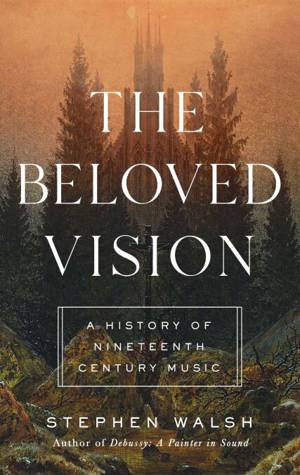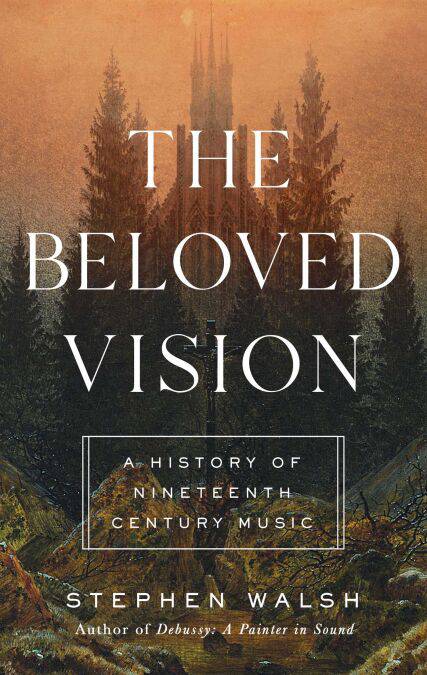
Je cadeautjes zeker op tijd in huis hebben voor de feestdagen? Kom langs in onze winkels en vind het perfecte geschenk!
- Afhalen na 1 uur in een winkel met voorraad
- Gratis thuislevering in België vanaf € 30
- Ruim aanbod met 7 miljoen producten
Je cadeautjes zeker op tijd in huis hebben voor de feestdagen? Kom langs in onze winkels en vind het perfecte geschenk!
- Afhalen na 1 uur in een winkel met voorraad
- Gratis thuislevering in België vanaf € 30
- Ruim aanbod met 7 miljoen producten
Zoeken
€ 22,36
+ 22 punten
Uitvoering
Omschrijving
A rich and luminous biography of nineteenth century music.
A New Yorker "Best Book of the Year"
When one thinks of “great” classical music—music with the most emotional resonance and timelessness—we harken back to the nineteenth century and the Romantic tradition. We recall the sweet melody of a Schubert song, the heroine dying for love in an Italian opera, the swooning orchestration of a Tchaikovsky symphony.
The emotional resonance of nineteenth century has moved generations muscians and resonated with countless listeners. It has inspired artists and writers. But no writer until how has adopted such a vividly insightful narrative approach as Stephen Walsh and he shows how there is more to Romantic music that meets the eye—and the ear.
With authority, insight, and passion, The Beloved Vision, links the music history of this singular epoch to the ideas that lay behind Romanticism in all its manifestations. In this complete, entertaining, and singularly readable account, we come to understand the entire phase in music history that has become the mainstay of the twentieth and twenty-first century concert and operatic repertoire. We also come to understand Beethoven, Mahler, Schubert, Chopin, and Wagner anew.
The narrative begins in the eighteenth century, with C.P.E. Bach, Haydn and the literary movement known as Sturm und Drang, seen as a reaction of the individual artist to the confident certainties of the Enlightenment. The windows are flung open, and everything to do with style, form, even technique, is exposed to the emotional and intellectual weather, the impulses and preferences of the individual composer. Risk taking—the braving of the unknown—was certainly an important part of what the composers wanted to do, as true of Chopin and Verdi as it is of Berlioz and Wagner. It's an exciting, colorful, story, told with passion but also with the precision and clarity of detail for which Stephen Walsh is so widely admired.
The Beloved Vision is a cultural tour de force, by turns bold, challenging, and immensely stimulating.
A New Yorker "Best Book of the Year"
When one thinks of “great” classical music—music with the most emotional resonance and timelessness—we harken back to the nineteenth century and the Romantic tradition. We recall the sweet melody of a Schubert song, the heroine dying for love in an Italian opera, the swooning orchestration of a Tchaikovsky symphony.
The emotional resonance of nineteenth century has moved generations muscians and resonated with countless listeners. It has inspired artists and writers. But no writer until how has adopted such a vividly insightful narrative approach as Stephen Walsh and he shows how there is more to Romantic music that meets the eye—and the ear.
With authority, insight, and passion, The Beloved Vision, links the music history of this singular epoch to the ideas that lay behind Romanticism in all its manifestations. In this complete, entertaining, and singularly readable account, we come to understand the entire phase in music history that has become the mainstay of the twentieth and twenty-first century concert and operatic repertoire. We also come to understand Beethoven, Mahler, Schubert, Chopin, and Wagner anew.
The narrative begins in the eighteenth century, with C.P.E. Bach, Haydn and the literary movement known as Sturm und Drang, seen as a reaction of the individual artist to the confident certainties of the Enlightenment. The windows are flung open, and everything to do with style, form, even technique, is exposed to the emotional and intellectual weather, the impulses and preferences of the individual composer. Risk taking—the braving of the unknown—was certainly an important part of what the composers wanted to do, as true of Chopin and Verdi as it is of Berlioz and Wagner. It's an exciting, colorful, story, told with passion but also with the precision and clarity of detail for which Stephen Walsh is so widely admired.
The Beloved Vision is a cultural tour de force, by turns bold, challenging, and immensely stimulating.
Specificaties
Betrokkenen
- Auteur(s):
- Uitgeverij:
Inhoud
- Aantal bladzijden:
- 400
- Taal:
- Engels
Eigenschappen
- Productcode (EAN):
- 9781639362370
- Verschijningsdatum:
- 3/10/2022
- Uitvoering:
- E-book
- Beveiligd met:
- Adobe DRM
- Formaat:
- ePub

Alleen bij Standaard Boekhandel
+ 22 punten op je klantenkaart van Standaard Boekhandel
Beoordelingen
We publiceren alleen reviews die voldoen aan de voorwaarden voor reviews. Bekijk onze voorwaarden voor reviews.









